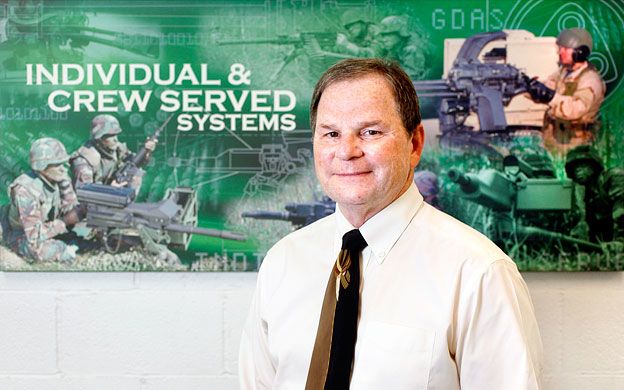Processing Your Payment
Please do not leave this page until complete. This can take a few moments.
- News
-
Editions
View Digital Editions
Biweekly Issues
- December 15, 2025
- December 1, 2025
- Nov. 17, 2025
- November 03, 2025
- October 20, 2025
- October 6, 2025
- + More
Special Editions
- Lists
- Viewpoints
-
Our Events
Event Info
Award Honorees
- Calendar
- Biz Marketplace
A new plan puts employers at the forefront of job training
 photo/TIM GREENWAY
Chuck Bates, staff development manager at General Dynamics in Saco
photo/TIM GREENWAY
Chuck Bates, staff development manager at General Dynamics in Saco
 photo/TIM GREENWAY
Chip Roche, owner of Newfab Inc. in Auburn, says employer-driven training programs produce better work-force development results within the manufacturing industry
photo/TIM GREENWAY
Chip Roche, owner of Newfab Inc. in Auburn, says employer-driven training programs produce better work-force development results within the manufacturing industry
A walk through the General Dynamics manufacturing facility in Saco juxtaposes old-school manufacturing and an increasingly high-tech environment.
In one area, a series of small blue presses used to manually bore machine gun barrels sits largely idle. But a hulky Computerized Pneumatic Control, or CNC, machine hums nearby with an engineer occasionally leaning over a laptop computer.
In another part of the 450,000-square-foot facility, two workers sit in front of computers in an air-conditioned, soundproof room as a robotic arm grabs onto a cherry-red piece of solid steel and places it into a machine with even bigger robotic arms that stretches and shapes the solid cylinder into two large machine-gun barrels.
The General Dynamics facility is just one example of a manufacturing business that has used technology to become more efficient and competitive in the marketplace — a rapid push that has left many manufacturing workers behind with outdated skills and a younger generation with the wrong impression about what it means to be a 21st-century manufacturer.
In a time when unemployment remains high, some would be surprised to know there are manufacturing jobs available here in Maine. Those jobs, however, require baseline skills in math, science and computers, which many of the unemployed do not have — a reality that is often referred to as the skills gap.
It's a reality that Chuck Bates, staff development manager at the General Dynamics Armament and Technical Products facility, knows all too well. Bates says the company, which offers several in-house training programs specific to making single- and multi-barrel aircraft weapons and grenade launchers, struggles to find qualified workers.
"We look for folks and they're not always available," says Bates. "We have looked at growing our own or putting our own system together."
To better address those needs, a new strategy for work-force development is being crafted by Gov. Paul LePage that many manufacturers, as well as other highly technical industries, believe will begin to address the skills gap.
Manufacturers are welcoming the proposed system, which places employers at the front of the work-force pipeline by training people for current job openings, instead of offering more generalized skills that might not be in demand.
Bates says in-house training comes at a cost, but declined to specify how much the company spends on training. The defense industry is highly competitive, and companies like General Dynamics are always looking for efficiencies to reduce costs. This new strategy could help.
"It's nice to know there are these initiatives going on that are going to address the need to develop the work force," Bates says.
Streamlining efforts
When LePage took office, he created the State Workforce Investment Board, a governor-led board made up of 60% businesses leaders.
Garret Oswald, SWIB director, says Maine receives about $9 million annually in federal funds, which are distributed to states based on population and unemployment. Less than 20% of those funds, he says, make it through the state's four work-force development boards to job seekers to help pay for training and certification programs.
Oswald says structural changes are needed to reduce administrative overhead, freeing up more money for job training.
"If we do this correctly, we will increase the amount of money available to train Maine citizens with a restructured system that is more effective and efficient," he says. "The governor wants more money spent on training that's relevant."
There are currently four local work-force investment boards throughout the state, each with their administrative costs. Oswald says some areas are better at getting discretionary grants than others, creating an imbalance in the types of services and training programs offered throughout the state.
Deputy Department of Labor Commissioner Jeanne Paquette says the state is working on a plan to reassign the duties of the regional work-force investment boards to the state level — a move designed to give more consistency to the types of training offered to people throughout the state.
"We have to look at it from a state perspective, so if you live in a certain part of the state you will have access to the same types of programs as someone in the different part of the state," says Paquette, who offers the assurance that the state will not dismantle effective programs. "These funds are coming into the state. We're not four states within Maine. This is one state system we are in charge of."
Oswald predicts the restructuring could save about $805,000 in the adult and dislocated worker programs alone, with additional savings expected in the youth training program.
"We're literally talking about hundreds of [additional] Mainers that could be served," Oswald says.
Increasing funding for training isn't the only objective. SWIB is in the process of restructuring the work-force training system to give businesses — whether through industry partnerships, community chambers or economic development entities — a say at the beginning of the process. Rather than training someone for a job that might not be in demand, the state will work more closely to meet the specific needs of specific business with available jobs.
"Right now, what we have is serendipity," Oswald says about how trainees are matched with open jobs. "We just need to be more strategic and deliberate in how we do this."
Oswald says SWIB is working on a new strategic plan that reflects LePage's priorities of putting businesses in the driver's seat of work-force training, standardizing the work-force development system, and making industry partnerships the cornerstone.
The power of partnerships
One way to find out the types of skills, certifications and training required by employers is to ask them. A model for doing that is through industry partnerships, which have been extremely effective in Pennsylvania, according to Leo "Chip" Roche, the owner of the Auburn-based Newfab Inc. and a SWIB member.
Roche, who also serves on the Maine Association of Manufacturers board, helped launch Pennsylvania's IP model more than a decade ago. While the program originally faced political opposition, he says Pennsylvania's General Assembly recently institutionalized the program and is funding it beyond the federal Workforce Investment Act dollars.
According to the Pennsylvania Workforce Development website, as of May 2011, there were 76 industry partnerships in 11 targeted industry clusters. Wages for workers who have gone through the program are 11% higher than those who didn't, and incumbent workers have an 11% higher retention rate. Since 2005, the training cost per participant has decreased by 82.8%.
"Employer-driven training programs tend to have a much higher rate of positive outcomes than non-employer-driven programs," says Roche.
The industry partnership model envisioned for Maine would rely on forming industry clusters, alliances and consortiums, where business leaders would get together and discuss their work-force needs. The most important needs would be reported out to SWIB, which would issue a request for training proposals from public and private providers for programs that best fit those needs. Workforce Investment Act dollars would then be allocated based on those proposals.
"There will be shifts in the training provided," says Roche. "It's a competitive program."
In addition to the federal funds, SWIB also would seek other public and private funding sources. The proposal calls on industry partnership companies to provide in-kind and matching contributions as leverage against the state's contribution. As the program grows, ideally it would become self-sustaining.
The proposal anticipates that in two years, Maine could have 250 company members and 30,000 employees trained, potentially adding 2,000 new jobs.
Manufacturing a model
Work-force development has been a hot topic at the Manufacturers Association of Maine's annual summit in each of the last two years. As such, the group has been busy forming industry clusters and assessments, positioning itself to be at the forefront of the new partnership model.
The association currently has five industry clusters: Alternative/Renewable Energy Cluster; Maine Aerospace Alliance; RF/Electronics/Wireless Communications Consortium; Medical Device Cluster; and High Performance Textile Cluster.
Lisa Martin, the association's executive director, says the Maine Aerospace Alliance is the most developed cluster. Fueled by a $499,000 grant from the Maine Technology Institute, the association created a database and a system to reach out to the industry, essentially becoming an information clearinghouse for existing and new businesses.
"We want to provide just-in-time data and information to service providers who work with job seekers," Martin says.
Based on member feedback, the 44-member alliance was able to work with Eastern Maine Community College as well as private training groups like the New England School of Metalwork to tackle a lack of certified welders. The group takes a similar approach when providing other in-demand certifications.
"We use private and public providers — all based on what the needs were," she says. "What we didn't do is set up training and then say, 'Oh, by the way, do you people need training?,' which is a fairly traditional way it happens."
Manufacturers aren't the only ones interested in the industry partnership model. Sally Sutton is a senior policy analyst at the University of Southern Maine's Muskie School of Public Service. She provides staff support to the Maine Health Workforce Forum, which was established in 2005 by the Legislature to address future work-force needs — essentially a partnership model.
When the forum first started meeting, it quickly realized the complexity of work-force training issues. After increasing the frequency of its meetings, the group, with help from the Maine Center for Disease Control and Prevention, helped pull in a $4.9 million grant from the U.S. Department of Labor to support its operations and training.
"The bulk of the money has gone to train allied health workers, nurses, certified nurse's assistants," she says.
Sutton said the grant originally aimed to train 400 workers, but that figure will be closer to 700 when it expires in February 2013.
"It has been tremendously successful in terms of getting people trained for the jobs that are actually needed," she says. "Also, the forum itself is a great opportunity for employers, educators, health professional groups and pretty much anyone who has an interest … to get together and hear what their needs are, not only at the state level but [in] their regions."
The forum shares a lot in common with MAMe; both are — or aim to be — information clearinghouses for their industries.
Sutton says she recently has been attending meetings to get a look at how Martin is organizing industry clusters. She is hopeful that the IP model will be approved.
"It hopefully brings people together and breaks down those silos," she says.
Martin says she is encouraged by the new direction. "There is still a lot of work to be done," she says. "The best part ... is that people have embraced this. It's moving forward because it is the right thing to do."
Moving forward
But even with the new work force development model, there is considerable work left to do when it comes to giving future workers the baseline skills to succeed in professions such as high-tech manufacturing and health care.
Both Sutton and Bates say the real challenge lies in reaching students and parents at a young age.
"We also need to talk way down into the middle-school and high-school level — all through graduate school — about the wide range of health professions that are in demand in Maine," Sutton says.
For manufacturers, this is particularly important, since the industry is struggling to emerge from its historical shadow of being a dirty, laborious job. At the Maine manufacturers' summit, employers repeatedly brainstormed about ways to get kids and parents into manufacturing facilities and get them excited about building things. Some highlighted school-based robotics programs as one way to dispel outdated manufacturing myths.
But even with in-house training programs, Bates says workers who want to be trained need to have a basic understanding of math and science to understand the systems.
"It's the feeder system — the pipeline — where the challenges have been," says Bates, who sounded optimistic that the issue is now getting the attention it deserves. "They have to have some skills when they get here."
Oswald says the new work-force development strategic plan, which makes industry partnerships a cornerstone, is working its way through the governor's office. He expects SWIB to hold a meeting and public hearing on the plan sometime in July. The administration hopes to get final approval from the U.S. Department of Labor's Employment Training Administration by the end of the year, he says.
"Five years ago those initiatives weren't there," Bates says. "Companies like ours were kind of left to pull together their own method of how they were going to get people into their workplace and train them to be productive."
Mainebiz web partners

The Giving Guide
The Giving Guide helps nonprofits have the opportunity to showcase and differentiate their organizations so that businesses better understand how they can contribute to a nonprofit’s mission and work.
Learn More
Work for ME
Work for ME is a workforce development tool to help Maine’s employers target Maine’s emerging workforce. Work for ME highlights each industry, its impact on Maine’s economy, the jobs available to entry-level workers, the training and education needed to get a career started.
Learn More
Groundbreaking Maine
Whether you’re a developer, financer, architect, or industry enthusiast, Groundbreaking Maine is crafted to be your go-to source for valuable insights in Maine’s real estate and construction community.
Learn more-
The Giving Guide
The Giving Guide helps nonprofits have the opportunity to showcase and differentiate their organizations so that businesses better understand how they can contribute to a nonprofit’s mission and work.
-
Work for ME
Work for ME is a workforce development tool to help Maine’s employers target Maine’s emerging workforce. Work for ME highlights each industry, its impact on Maine’s economy, the jobs available to entry-level workers, the training and education needed to get a career started.
-
Groundbreaking Maine
Whether you’re a developer, financer, architect, or industry enthusiast, Groundbreaking Maine is crafted to be your go-to source for valuable insights in Maine’s real estate and construction community.
ABOUT
NEW ENGLAND BUSINESS MEDIA SITES
No articles left
Get access now
In order to use this feature, we need some information from you. You can also login or register for a free account.
By clicking submit you are agreeing to our cookie usage and Privacy Policy
Already have an account? Login
Already have an account? Login
Want to create an account? Register
Get access now
In order to use this feature, we need some information from you. You can also login or register for a free account.
By clicking submit you are agreeing to our cookie usage and Privacy Policy
Already have an account? Login
Already have an account? Login
Want to create an account? Register







Comments